
Traversing the premises of Pixar is a surreal experience to say the least. It’s a bit like exploring Willy Wonka’s chocolate factory, but without the creepy orange midgets that break into song. The studio has such a colorful, laidback atmosphere; simply being there gets you excited. And yes, the fact that they create easily the best kid-friendly entertainment on the planet certainly helps matters.


After about fifteen minutes of exploring the main hall and checking out the building’s gorgeous décor, I had already forgotten I had a job to do. Pixar had invited JoBlo.com and a few other film journalists down to their studio (near San Francisco) to tour the place and chat with director Andrew Stanton after screening the completed first third of WALL-E.
The first part of the tour was essentially a breakdown of how awesome Pixar is. Our sprightly young guide explained how much effort and thought was put into the building’s design and all the areas we were going to be observing, and how that’s part of what makes Pixar great: they’re attention to detail. Normally this type of self-fellating attitude puts me off, but in this case it’s a little hard to argue.

On top of all the artistic flourishes surrounding the building’s main hall, it also has a café (entitled Café Luxo), a pool table, foosball, ping-pong, and video games. It feels more like a great hangout area than a place of work. But the sense of freedom doesn’t end there: they’ve also got a gym, swimming pool, courts for basketball, volleyball, and soccer, and most impressive of all, a whole university dedicated to educating employees on even the most random subjects. And people get paid to work there. The world is a crazy place.

Moving to the upstairs floor, we were treated to a collection of the various elements that go into creating their films, from the elaborate storyboards to the exquisitely detailed clay models. Unfortunately, these areas were off limits from photography, but if you’ve seen any of the featurettes on the Pixar DVDs that should give you some idea of the stunning artistry on display. Particularly fascinating was a framed image providing info on how the jolly and large chef Gusteau’s neck fat should fluctuate in their previous film, RATATOUILLE. Classy stuff.

As a special treat, we also got an inside peek at their animation floor, which despite normally being off limits, they made an exception to get us in. Oh joy, we get to see a bunch of offices, desks, and computers, right? Think again. Each office resembled more that of alternating Extreme Makeover episodes mixed with a dash of Twilight Zone, with each worker being given the freedom to design their workspace however they see fit (including one that had been overhauled to look like a Hawaiian tiki palace), and the outside area being littered with tons of the coolest “junk” imaginable (such as those old school Chuck E. Cheese robots). How people are able to get any work done here, I have no idea.



Once we got done admiring the studio offices, we were taken to Pixar’s screening room to sit down with director Andrew Stanton and check out some of WALL-E. Since the movie essentially plays out much like the trailers have indicated, I won’t go into too much detail about what happens in the film. I will say, however, that it was almost heartbreaking to not be able to finish watching the rest of it, as what we witnessed was among the best Pixar has created. There’s a perfect balance of slapstick humor and earnest emotion that, even without much real dialogue (other than Wall-E and Eve robotically speaking their names numerous times), the production is wholly engaging, hilarious, and even touching. From what I can tell, Pixar has hit another one out of the park.
After we finished watching the completed first third of the movie, questions opened up for the film’s director, who had a lot to say about what his intentions with the film were, how the characters were designed, and plenty more.

INTERVIEW:
ANDREW STANTON
Was Wall-E’s love interest, Eve, designed to look like an Apple product?
The biggest thing was, what’s the sexiest other end of the spectrum? We kept saying, “Wall-E’s a tractor, Eve’s a Mercedes.” So in the world of technology, what’s the sleek, most seamless, the-moving-parts-are-hidden kind of technology, so we sort of riffed on anything of that ilk.
What was it like creating a movie without dialogue?
Well, first of all, I think that’s a misnomer, because there’s dialogue all throughout the movie. All I’m saying is that they’re not necessarily saying a language you know. But what I wanted was integrity. It all comes back down to: just as much as I believe Luxo is a lamp, and that it has a life in it, and it thinks like a lamp and acts like a lamp, and I don’t have to be told that, and it doesn’t have to spelled out for me. I wanted the same thing with the robots. I wanted you to believe that’s a machine and it’s been there for hundreds of years and it has a thought process on its own, and it was designed a certain way so therefore it would have a certain way it spoke electronically, and Eve was designed a certain way and she would speak a certain way electronically. I just wanted things to be sort of logic based. And it was all to service the integrity of the world, because I just want to believe I’m really there. So that chose the look of the film, the lens choices, some of the technology advances we’ve made so you’ll get more of a sense of the three-dimensional atmosphere. Anything we did was just to enhance the experience of believability.
Were you trying to put a little R2-D2 in Wall-E?
We certainly make blatant homages every once in a while, but overall you try to make everything as original as you can make it, but everything probably comes from your collective unconscious of things that influenced you. It’s all subconsciously quite incestuous, I’m sure.
Were there conscious things you were going for?
No. Everything tends to be just an accident that after over a while you go, “Oh.” I mean, I’ve had a million things in other movies I’ve worked on where people just go, “You know, that’s just like this,” and you go, “Oh, really?” So who knows?
But I want everything to come from a sincere place. And whether that ends up being a choice that seven other films made, I don’t care as long as that choice came for the right reasons.
It’s clear with movies like WALL-E and other films from Pixar that you’re trying to avoid talking down to kids…
I argue that kids are smarter than you think. Kids are wired up for the first 10 to 15 years of their life to figure everything out. So, they’re watching you all the time; they maybe don’t understand what you and mom just talked about, but they’re trying to glean anything out of the inflection, out of the timing, out of when it’s happening, what peoples’ faces look like… They’re way more receptive to translate than our jaded adult selves.

You said for FINDING NEMO that the idea came from you being with your son. Did anything from your own life spawn WALL-E?
No, like I said, things came from different things for different movies, and this one just honestly was coming up with a situation of a robot left alone on a sort of Robinson Crusoe kind of situation, and that just evolved over time. And the funny thing is that immediately, almost in the next sentence, I remember Pete Docter and I continued to talk about it after our lunch, was that without even any debate, we said, “Oh, you’d never want to have it speak.” You’d want it be a real robot. You’d want it to have to speak with how it was built. That was the excitement about it.
How did the live-action footage within the film come about?
To be honest, it just came out of a logistical conceit that I knew I wanted to use footage of a musical, from a live-action movie. I had the luxury of evolution on my side that we made up for the future for humans, so that we didn’t have to worry about matching. But any retro footage, I just felt you wouldn’t be in the same world if you didn’t… we knew we were going to use footage from ‘Hello Dolly!’
Why did you choose HELLO DOLLY! for the musical footage?
I know this is the question I know I’m gonna get asked for the rest of my life is, “Why ‘Hello Dolly’?” And the one thing I wanted to spill is I’m a fan of the movie. I just like to think that Wall-E has bad taste in musicals. But he’s a romantic at heart, you know, he’s not that discerning.
You know, every once in a while you do change something because somebody got there first. It was frustrating to be in the same year as ‘Triplets of Belleville,’ because I loved that film when ‘Nemo’ came out. And I was already working on ‘Wall-E.’ And ‘Wall-E’ originally had a French ’30s swing music at the beginning, and I just loved the juxtaposition of that, the old and the new, I hadn’t seen that. And then I saw ‘Triplets of Belleville,’ which had French swing music over not a lot of speaking, and the last thing I wanted to be accused of was stealing from something.
And it didn’t have to be that piece of music, so I started opening my mind to other old-fashioned things, and to be honest the story wasn’t fully complete at the time, just sort of parts of the story were. And I had been in Hello Dolly! the musical, and a lot of other musicals growing up in high school, and for some ironic reason–I don’t know if you guys do this, I troll iTunes every once in a while–and I remember stumbling through and going, “I remember this,” and trying to remember the songs. I remember immediately going, “This is the most bizarre idea I’ve ever had, but it just might work.” And I juxtaposed it against the opening, and it worked. And it led to me figuring out more about what other songs were in the movie, and it really opened doors for me for how to tell the story without having to rely on dialogue.
Can you talk a little bit about Wall-E’s fascination with Eve? He seems obsessed with how different she is.
Yeah, there’s like an inkling of however he evolved, there’s something in there for her for him to be attracted to. And also, frankly, she just needs to be there. Just seeing another robot. It’s impossible not to immediately make a very primal analogy to “love at first sight,” and being able to use the sci-fi means at hands to express that. That’s really all it was. That’s pretty much been the road map for the whole movie.

What was it like creating everything in this futuristic world?
That’s the vein of these kinds of movies. First of all, just a CG movie, you get nothing for free. If you see it in there, somebody had to plan it, somebody had to draw it, somebody had to paint it, somebody had to model it. Nothing came by accident. Nobody was able to go to a thrift store, a prop shop, take a photo outside… So that’s just overwhelming. It’s daunting. You add on top of that a fantasy world where those no rules and you get to make up what you think the future looks like? You almost want to give up right away, because it’s just too many decisions to make.
So you surround yourself with really talented people that have really strong opinions about how they like things to look, and you just start chipping away a day at a time until it doesn’t seem so overwhelming. It’s like that on every movie, but I gotta say, this movie and ‘Monsters’ were probably the most burdensome on the art department, just because of the fantasy world aspect, there’s just that much more you have to come up with. You can’t just go, “Oh, it’s a dentist’s office.” So, the end result is very satisfying, but to get there it’s truly daunting.
Was there a guiding principle that led you?
You know, if there was, I knew that I had to tell the story with the Earth. I had to tell a lot of history. I had to tell what’s happened over 1,000 years, so that almost dictated what everything was. You wanted a city that felt sort like Shanghai’s starting to feel like now, or Dubai. And then you had to have trash towers that were amongst that. Because you’re telling a history that you haven’t seen yet, and now you’re also telling the demise of that history, and then the way to try to sort of solve problem of that past history, and now the sort of dystopian result of that, so it’s so layered. It was a real brain-tease. It was thrilling to solve it. But that’s really what drove everything. Just telling the story of it.
But then we knew again we wanted the future to be cool. We all are probably very similar because of our backgrounds here, that we all miss the Tomorrow-land that was promised us from Tomorrow-land of the heyday of Disneyland, and that really said, “Well, that’s the future I want to have seen us get to.” You see it now. It’s like, this may be adding more burden to my life, but it’s so cool I can’t resist. It’s the seduction factor. It’s too convenient, it’s too cool. And to me, all of Tomorrow-land at Disneyland in the late ’50s-’60s design was like that. I’d say, “Yes, give it to me!” We turned it into the phrase of, “I just want it to have that, ‘Where’s my jetpack?’ feel.” So “Where’s my jetpack?” became sort of the touchstone of any art direction for anything that was truly trying to tack on to the futuristic design of stuff.
Some people have said CGI will actually look completely real in about 5 years.
That’s a bold statement.
We’re seeing a bit of that here though, right?
Well, there isn’t a desire to be photo realistic. To make sure that that’s not how that’s interpreted. But there’s a desire to just indulge and believing that you are where you are.

How have you managed to capture such a strong realism?
You know, we’ve all been to film school since ‘Toy Story.’ It’s not like we came in as really knowledgeable filmmakers. We were too stupid to know we couldn’t do it, and so we just kept working on it. We’ve gotten smarter as we go, wanna keep learning, and I remember getting to a point at the end of ‘Nemo,’ I got so seduced by the underwater feel we managed to get with it–this extra dimensional sense, and I said, “Can we do that in the air?” And then we started to look at what other cameras were doing whenever I watched one of my favorite films, whenever they were wracking focus, the barrel distortion, and the little ovals on the lights. And I would notice our stuff wasn’t doing that exactly, or not at all. Invariably, you would reach some guy who did the programming who would say, “No, the math’s all right.” And you’d go, “That doesn’t answer it for me. I don’t care if the math’s right. It’s not doing what it’s supposed to be doing.”
So we actually hired Roger Deakins, the famous cinematographer, to give us a crash-course on cinematography, and then liked him so much we asked him to stay another week or two. Because what we do is so foreign to how we approach it, we’re trying to get the same end result. It happened to coincide with us deciding we were going to rent air-flux cameras and shoot an stand-in even Wall-E, three-dimensional, with the grid on the atrium in here, and do all the things with the camera we wanted to do, and then we would make a virtual set of exactly the same thing in our computer, and then compare. And sure enough, they didn’t match. That’s all our computer engineers needed to see to get challenged and frustrated, and started to fix things. And we’ve been able to now be able to play in a much more accurate grammar of what we’ve all sort of been unconsciously used to seeing in our favorite sci-fi films.
Do you have an example of a scene from the film?
Well there’s a scene where you see Wall-E looking at Eve while she’s got the lighter, and all the Christmas lights turn into nice bright transparent circles over one another. And that’s achieved by a very narrow shallow lens that blows everything else into a distortion and blur, but the way it does becomes very magical and romantic. And we weren’t getting that at all.
Can you talk a little about the sound design?
Yeah, yeah… Ben Burtt. Because I knew that, again, the dialogue from many characters generated from their own kind of style, I had to spend a lot of time with Ben Burtt just auditioning stuff. I’d talk about a character, show him the drawings, and he’d go off and come up with a bevy of ideas of what that machine would sound like.
Can you explain a little bit about the film’s possible environmental message?
I was dragged kicking and screaming to get it to have that, because I just went with what logically would make this relationship work, and invariably it had to pull into areas that I think I may get accused of having some sort of message, and I’ve tried anything I can to not. But I think it’s unavoidable. It is what it is.
The movie seems to be leading up to Wall-E going to the human world. Does that happen?
Your hunches would be in the right direction. To be honest, for all the grandeur in the backdrop and all the fantastical things that’ll continue to happen in the movie, it’s a simple love story, and we try to keep it very much “small” on the massive backdrop.






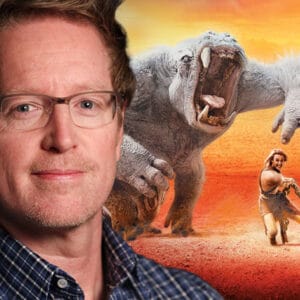
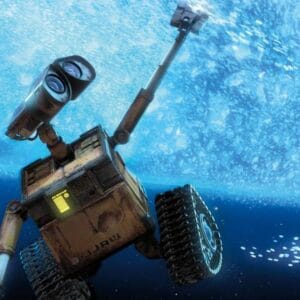
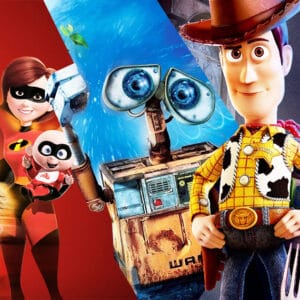
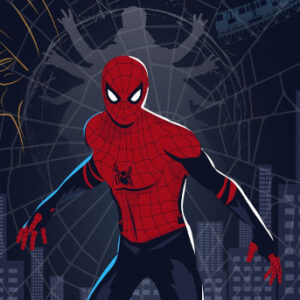


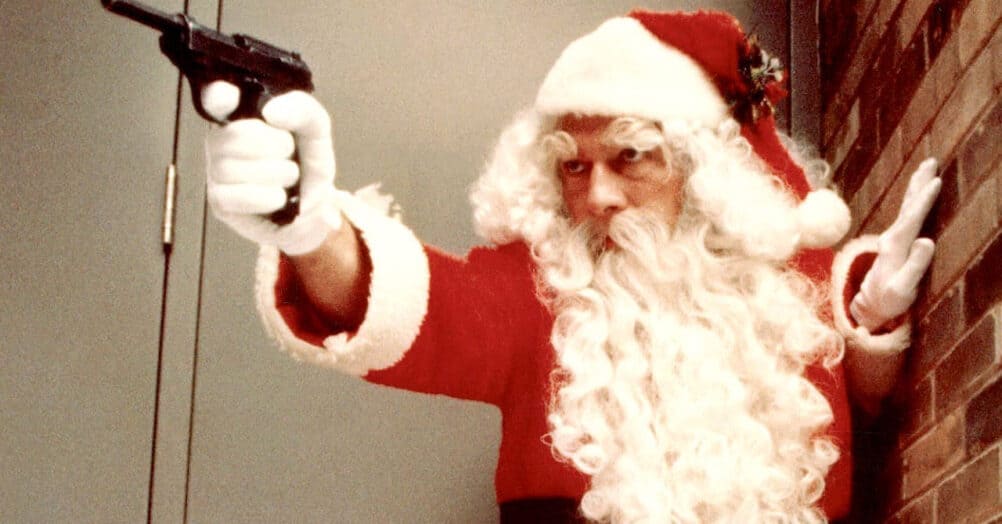

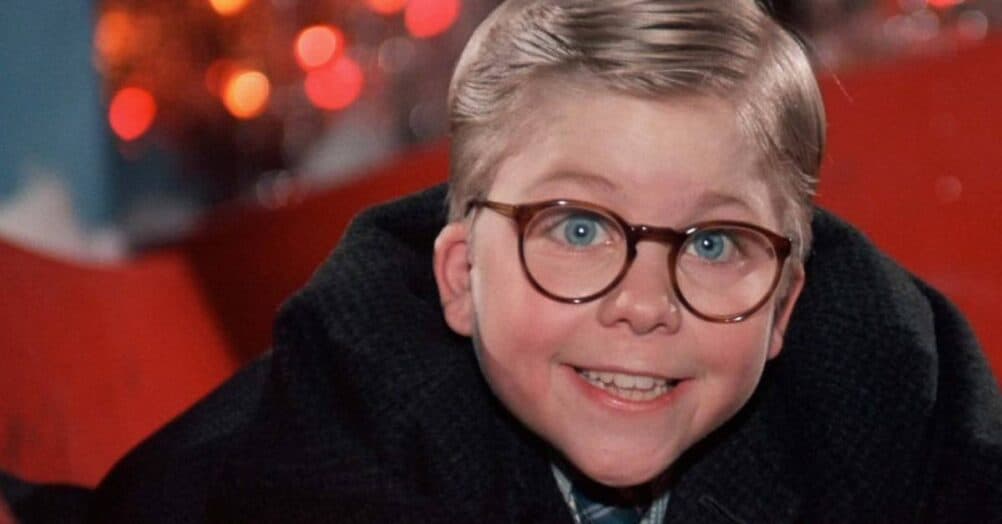





Follow the JOBLO MOVIE NETWORK
Follow us on YOUTUBE
Follow ARROW IN THE HEAD
Follow AITH on YOUTUBE